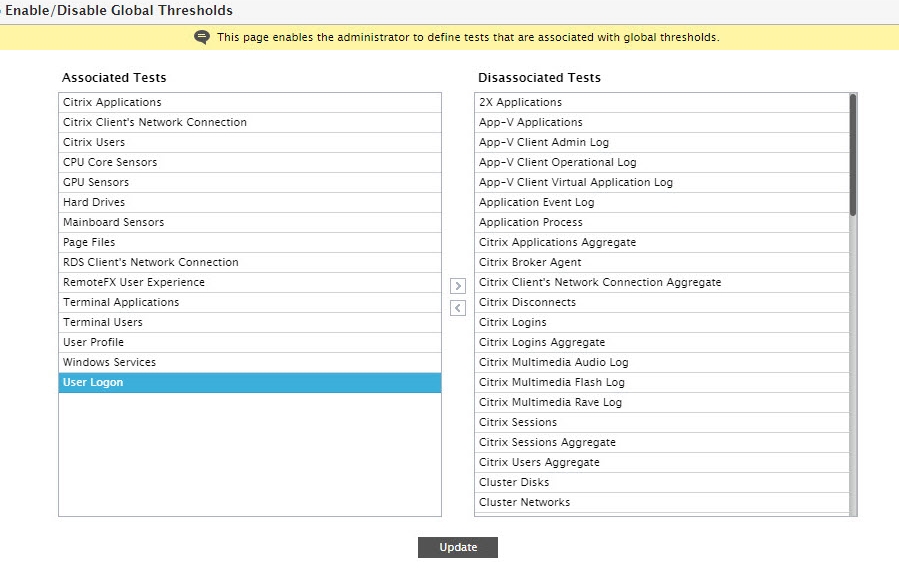Global Thresholds
While monitoring large environments, some tests executed by the eG agent report statistics on hundreds of descriptors. For example, the User Profile test reports the profile size of each and every Citrix or Terminal server user of a server. Likewise, the Windows Services Status Test reports on the availability of each and every service of a Windows system. For such tests, storage of the threshold values for each hour for each descriptor can result in significant disk space usage in the eG database. In order to enable administrators to optimize database usage for tests that do not use the automatic threshold computation (i.e., relative thresholding) capability, eG Enterprise offers the Enable/Disable Global Thresholds page.
To access this page, select the Global option from the Thresholds menu of the Alerts tile. Figure 1 will then appear.

Figure 1 : Selecting tests for which GLOBAL THRESHOLDS apply

Figure 2 : Transferring the test for which Global thresholds should be applied
The Disassociated Tests list in Figure 1 displays the tests mapped to all the managed components in the target environment. From this list, select those tests for which thresholds need not be stored in the database. For example, if the User Logon test has to be configured to not store thresholds in the database, select User Logon test from the Disassociated Tests list as shown by Figure 1, click on the < button, and move the selected test to the Associated Tests list. Once one/more tests are so associated (see Figure 2), the eG manager retrieves thresholds for such tests from their configuration files, and does not store any thresholds for these tests in the eG database. As a tradeoff, the thresholds for these tests apply to all the servers being managed, and cannot be set specifically for every server. Hence, Specific Thresholds cannot be computed for these tests. Moreover, when configuring the default threshold for these tests, the threshold policy has to be either "absolute" or "none". The threshold settings can be set differently for different descriptors of a test for which Global threshold is set. This setting reduces the number of false alerts that the monitoring system can generate. For example, the inside view of a VM reports the CPU usage per processor and also an overall summary value. By setting descriptor -wise thresholds, the thresholds can be disabled for all processors of a VM and only the summary value can be set to generate alerts – this way an administrator is alerted only if the VM as a whole is experiencing high CPU utilization.
